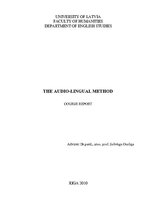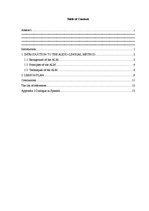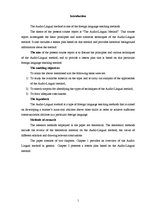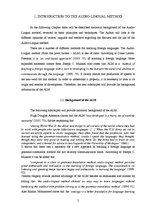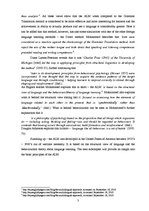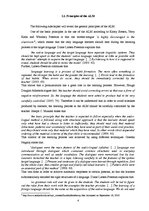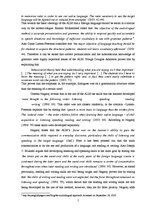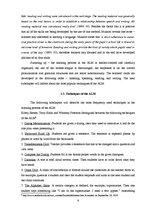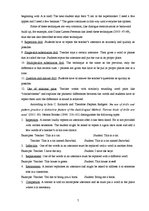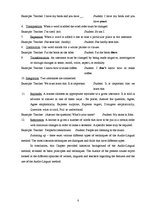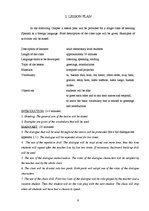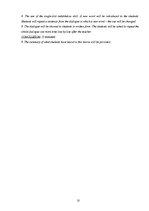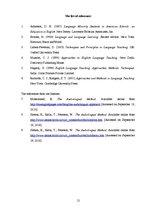-
Audio Lingual Method
| Nr. | Chapter | Page. |
| Abstract | 1 | |
| Introduction | 1 | |
| 1. | INTRODUCTION TO THE AUDIO-LINGUAL METHOD | 2 |
| 1.1. | Background of the ALM | 2 |
| 1.2. | Principles of the ALM | 4 |
| 1.3. | Techniques of the ALM | 6 |
| 2. | LESSON PLAN | 9 |
| Conclusions | 11 | |
| The list of references | 12 | |
| Appendix Dialogue in Spanish | 13 |
Conclusions
As stated in the Introduction the Audio-Lingual method is one of the foreign language teaching methods. It is a foreign language teaching method that primarily focuses on the listening and speaking skills, thus the reading and writing skills are still being developed. The use of the mother-tongue in an audio-lingual classroom is fully avoided. The present course report discussed historical background information about the Audio-Lingual method, investigated the basic principles and most common techniques of the method, and included a lesson plan based on this method.
The aim to discuss the basic principles and most common techniques of the Audio-Lingual method, and to provide a lesson plan that is based on this particular foreign language teaching method as stated in the Introduction is achieved.
As stated in the Introduction the lesson plan based on the Audio-Lingual method was created, four of the Audio-Lingual method’s techniques were included – repetition drill, dialogue memorization, chain drill, and single-slot substitution drill.
Consequently the hypothesis has been proved that the Audio-Lingual method is a type of foreign language teaching methods that is aimed on developing a learner’s aural-oral abilities above other skills in order to achieve sufficient communication abilities in a particular foreign language.
…
The Audio-Lingual method is a type of foreign language teaching methods that is aimed on developing a learner’s aural-oral abilities above other skills in order to achieve sufficient communication abilities in a particular foreign language. The present course report provides historical background information about the Audio-Lingual method, investigates the basic principles and most common techniques of the method, and includes a lesson plan based on this method. To explain what is the Audio-Lingual method theoretical aspects of the Audio-Lingual method have been discussed.

